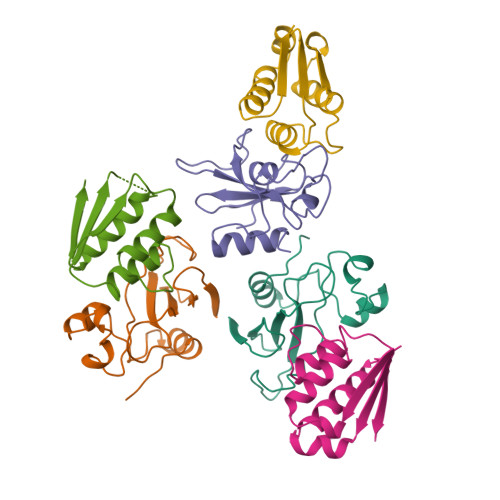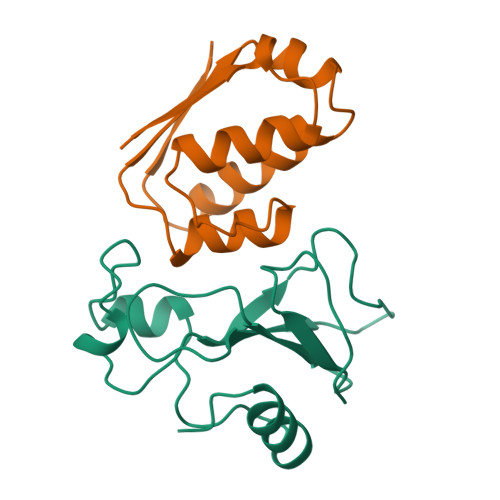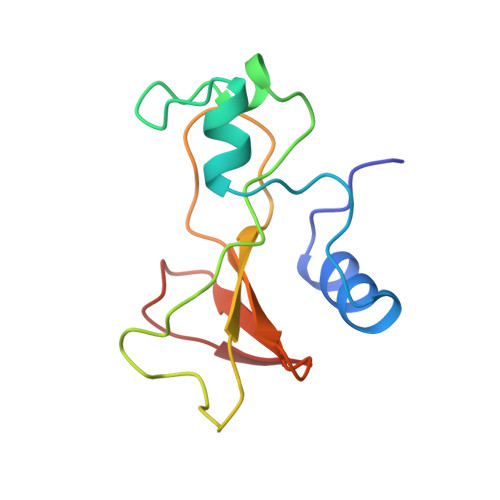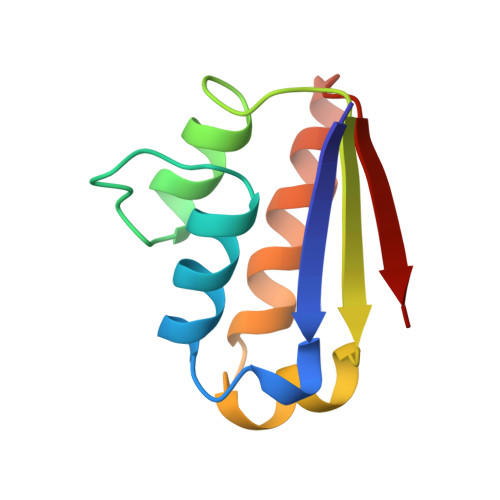Structural response to mutation at a protein-protein interface.
Vaughan, C.K., Buckle, A.M., Fersht, A.R.(1999) J Mol Biology 286: 1487-1506
- PubMed: 10064711
- DOI: https://doi.org/10.1006/jmbi.1998.2559
- Primary Citation of Related Structures:
1B27, 1B2S, 1B2U, 1B3S - PubMed Abstract:
We have crystallised three mutants of the barnase-barstar complex in which interactions across the interface have been deleted by simultaneous mutation of both residues involved in the interaction. Each mutant deletes a different type of interaction at the interface: the first complex bnHis102-->Ala-bsTyr29-->Phe (bn, barnase; bs, barstar), deletes a van der Waals packing interaction; the second complex, bnLys27-->Ala-bsThr42-->Ala, deletes a hydrogen bond; the third, bnLys27-->Ala-bsAsp35-->Ala, deletes a long-range charge-charge interaction. The contribution of each of these side-chains to the stability of the complex is known; the coupling energy between the deleted side-chains is also known. Despite each of the double mutants being significantly destabilised compared with the wild-type, the effects of mutation are local. Only small movements in the main-chain surrounding the sites of mutation and some larger movements of neighbouring side-chains are observed in the mutant complexes. The exact response to mutation is context-dependent and for the same mutant can vary depending upon the environment within the crystal. In some double mutant complexes, interfacial pockets, which are accessible to bulk solvent are formed, whereas interfacial cavities which are isolated from bulk solvent, are formed in others. In all double mutants, water molecules fill the created pockets and cavities. These water molecules mimic the deleted side-chains by occupying positions close to the non-carbon atoms of truncated side-chains and re-making many hydrogen bonds made by the truncated side-chains in the wild-type. It remains extremely difficult, however, to correlate energetic and structural responses to mutation because of unknown changes in entropy and entropy-enthalpy compensation.
Organizational Affiliation:
MRC Centre for Protein Engineering, Hills Road, Cambridge, CB2 2QH, UK.





















